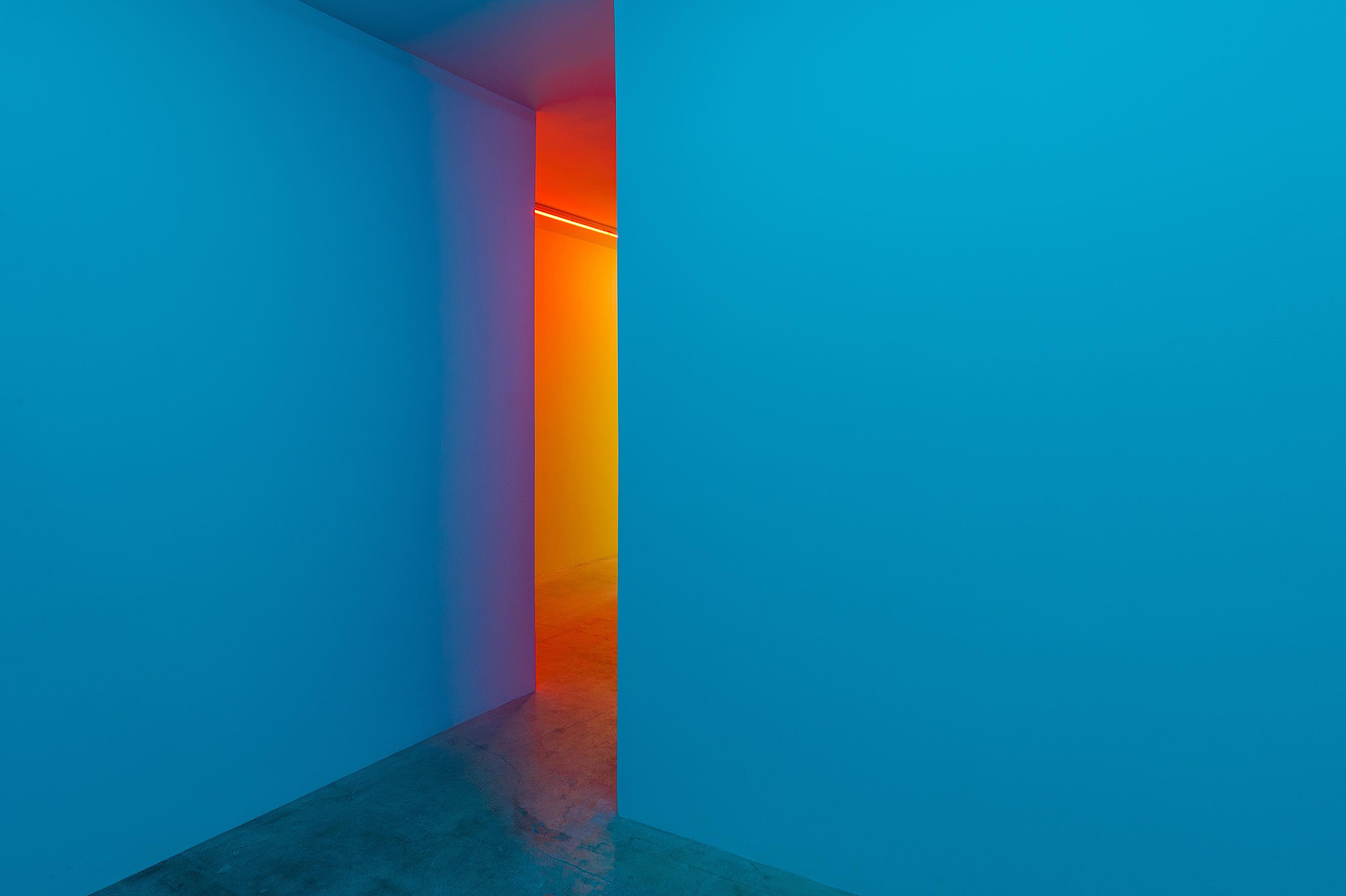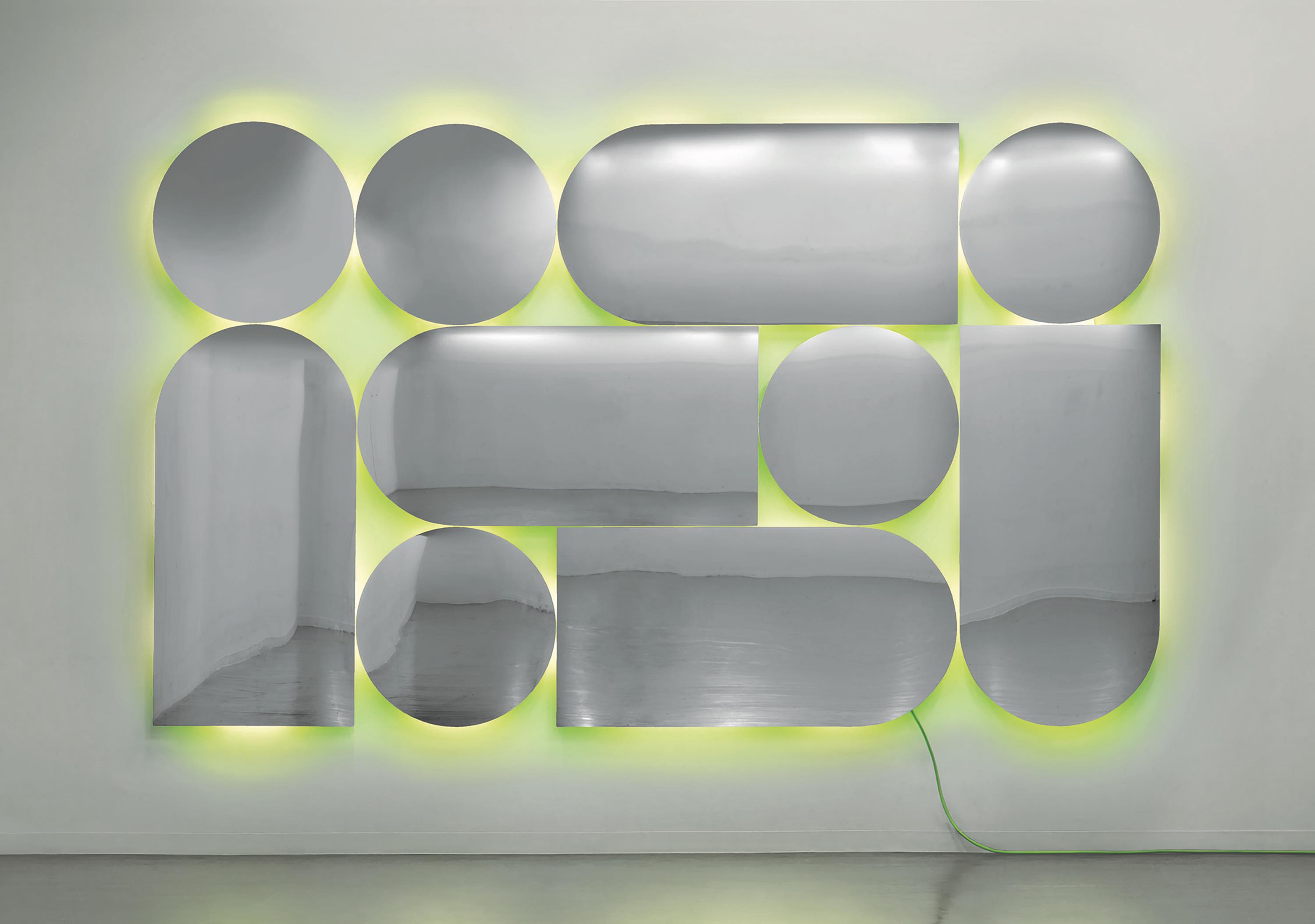
Takuro Tamayama
Solo Exhibition
Anything will slip off / If cut diagonally
7.17 (Sat.) - 8.14 (Sat.), 2021 / Extended: 8.26 (Thu.) - 9.4 (Sat.)

When I was born when I was born, 2021 ©Takuro Tamayama
Open on Tue, Wed, Thu, Fri, and Sat. 12:00 – 18:00
Closed on Sundays, Mondays, and National holidays.
* The gallery will not be closed for summer during the run of the exhibition. It will be closed only on Sundays, Mondays, and National holidays.
* To protect public health against COVID-19, we will suspend the reception event.
We are pleased to announce the upcoming solo exhibition of works by Takuro Tamayama titled Anything will slip off / If cut diagonally, running from Saturday, July 17 to Saturday, August 14, 2021.
Born in 1990, Takuro Tamayama is an up-and-coming artist who makes sculptures using found objects such as everyday items and pieces of furniture, and creates pictorial space with video works positioned in space and intense lighting.
Titled Anything will slip off / If cut diagonally, this is Tamayama’s first large-scale solo exhibition. In it, visitors will also be able to see When I was born when I was born, a plan display of spatial composition experimentally shown on the Internet, in the real space of the gallery.
With a minimum of handling, Anything will slip off / If cut diagonally deftly substitutes art for the gravity regulating the configuration and behavior of things in the real world. While giving viewers a sort of déjà-vu feeling, Tamayama creates circumstances that definitely could not occur in a world dominated by Newtonian dynamics, and by means of extremely analogue methodology.
For example, the floor is rotated 90 degrees to the position of the wall, and spaghetti (naturally?) slips off the plate placed (hung?) there (which is “correct,” the behavior of the plate, or that of the spaghetti?).
A wall warped in an unexpected direction, drooping; a “floor” lamp abruptly jutting forth from it; a “horizon” drawn at an angle differing from that of the “horizon” of the gallery floor; water solidified inside a glass…

VISION part 1: On Light / Light On: in the celebration of 25th Anniversary of the Toyota Municipal Museum of Art,
Installation view, Toyota Municipal Museum of Art, 2020
Photo by Kei Murata
This exhibition embodies little dynamic disparities from normality in objects and utilizes huge lighting devices to present “space that is nowhere.” At first glance, this space looks like cyber space. Nevertheless, the visions conjured up by the striking illumination reminiscent of a scene from movies directed by Mario Bava or Dario Argento(*1) are made by entirely analogue means, and therefore deliver a real experience.
Similarly, the space generated by Tamayama has a bizarre character that recalls a landscape in someone’s dream, the absurdities of an episode of The Twilight Zone(*2), or a dystopia portrayed in a science fiction movie.
Is a rose red in utter darkness? Is a rose red even when no one is looking at it? These questions ask whether color is a perception of ours or an inherent quality of the object. If it is the latter, then the rose is always red. But if perception alone is the very presentation of the world per se, then the rose is not red(*3).
Suggestive of such theoretical questions, this exhibition simultaneously confronts viewers with the unsettling possibility that they cannot share their perceptions, and also may not be seeing the same colors and, by extension, the same scenery, as others.
With a composition refined to the ultimate degree, the space contains aberrations like those in a weird dream. When viewers enter it, they play the role of symbolizing these aberrations (along with their own gut feelings). (The rose is red as long as the viewer is present, and the “dynamics of here” are mistaken.)

Takuro Tamayama and Tiger Tateishi, Installation view, Nonaka-Hill, 2019, Courtesy of Nonaka-Hill, Los Angeles.
photo by Takayoshi Nonaka-Hill
In a space filled with light that makes ordinary vision unreliable, one work uses three mirrors that are merely smooth surfaces with a circular shape and call to mind human heads. They reflect an image of the actual space reversed right-and-left, and produce the oxymoronic image of “flat depth”.
When flesh-and-blood viewers enter the installation space, their reflections appear from time to time in the mirrors, such that the viewers end up viewing themselves within the work. Creating this sort of nested structure and attendant aberrations, Tamayama easily brushes aside the values of virtual space and builds in the gallery an unfamiliar (≒ unheimlich) cosmos that is accompanied by actual objects and real experience throughout.

Reference: 5 Shapes (Sally Green), 2020 Photo by Naohiro Ueno
The arrays of objects and space are designed basically in parallel as opposed to placing one or the other first. (The two exist without a boundary between them.)
The horizon outside the window exists in the space, albeit with curvature, through the medium of an object(s) with a mirror surface.
Sound exists as if being precisely operated and presented, and reverberating.
Like the chemical evolution induced by sunlight in the seas of the primordial earth, the objects and space exist while being rendered visible by illumination from a single common light source.
Time hangs on the inclination of things and exists with volume.
Space cannot be viewed from the outside. (There exists the image of a shell.)
All components are not fictitious; they exist in accordance with the standards of the real world and phenomena that actually occur in it, without limit.
Everything exists in two dimensions.
Takuro Tamayama
Translation of Japanese text reproduced from the website of AICHI⇆ONLINE
For this exhibition, we have also invited White Waters, a unit consist of the two artists C2D and Tamayama, to display their work I ALONE CAN FIX IT in a corridor of the gallery.
We encourage you to read the commentary by these two artists on this unit and the work displayed at this exhibition, by clicking here.
This is an ambitious, large-scale installation for which Tamayama, White Waters, and ANOMALY have given up their summer vacations.
Notes:
(*1). Mario Bava and Dario Argento
These two Italian film directors produced numerous horror movies. Their works are characterized by the use of vivid lighting for which they specified primary colors (in Bava’s case, beginning in 1963 with his first color film).
(*2). Twilight Zone
This was a series of science fiction dramas broadcast on television in the United States during the 1950s (there were subsequently many remakes of the originals). With stories revolving around supernatural phenomena and mysterious happenings, the series was highly popular.
(*3). Reference:
NOYA Shigeki, Tetsugaku na hibi – kangaesasenai jidai ni koshite (Philosophical days – defying an age discouraging thought), Kodansha, 2015.
Gakkaidayori (News from the Society of Philosophy), No.96, pp.5-6, Sophia University (only in Japanese), https://bit.ly/3ycnEhi

Awesome Rocks, Installation view, Assembridge NAGOYA 2016, Former Minato Darmitary of Nagoya customs, Aichi
Courtesy of Minatomachi Art Table, Nagoya [MAT, Nagoya] Photo by Tetsuo Ito
Born in Gifu, 1990. Lives and works in Saitama, Japan.
Common tools in a vibrant color palette, with lights, and moving images are the ingredients for the work of Takuro Tamayama. His sculptural, immersive installation, and meticulously articulated yet imaginative composition in the visual space utilize various found objects such as brush, mop, plate, and sofa accompanied with his paintings, color gradation expressed in the video, kinetic movement, and the sound.
The recent major solo and group exhibitions include “VISION part 1:On Light / Light On”, Toyama Municipal Museum of Art, Aichi (2020), “VOCA 2020”, The Ueno Royal Museum, Tokyo (2020), “Euphoria”, TICK TACK, Antwerp, Belgium (2019), “The Sun, Folded.”, OIL by Bijutsutecho (2019), “Takuro Tamayama and Tiger Tateishi”, Nonaka-Hill, Los Angeles, USA (2019), Group Show, Sapporo Odori 500-m Underground Walkway Gallery, Hokkaido (2019), “Dirty Palace”, CALM & PUNK GALLERY, Tokyo (2018), and “ASSEMBRIDGE NAGOYA 2016”, MAT Nagoya, Aichi (2016).
His artistic creation notably spans various collaborations with fashion lables – soduk, ZUCCa, NIKE, and AURALEE for their product designs and the installation projects.
Notification of precautions and requests
To prevent the spread of COVID-19, and to ensure the safety of visitors, artists, staff, and the community in compliance with the government’s health guidelines, please take a moment for the following requests upon your visit.
To avoid three C’s (Closed and Crowded place, Close contact), please refrain from visiting the gallery in large groups.
Visitors are asked to wear masks and sanitize hands before entering the gallery. Hand sanitizer is available at the entrance.
Please refrain from visiting the gallery if you have symptoms such as a fever (37.5°C or higher) or cough.
Our staff will have temperatures taken before coming to work to check health conditions every day, and will guide you by adopting frequent hand hygiene and wearing masks.
The entire space will be regularly ventilated and we will disinfect the high-touch areas.
Please check our website or SNS for the latest information about opening hours, as we may change it or close the gallery in unpredictable circumstances.
We appreciate your cooperation.























